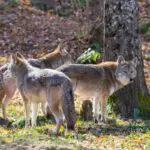Mountain lions are large cats found across the Americas, but so are pumas! Are they the same animal, or two completely different species?
The answer? Pumas and mountain lions are the same animal species! They belong to the cat, or Felidae family, and have the scientific name of Puma concolor.
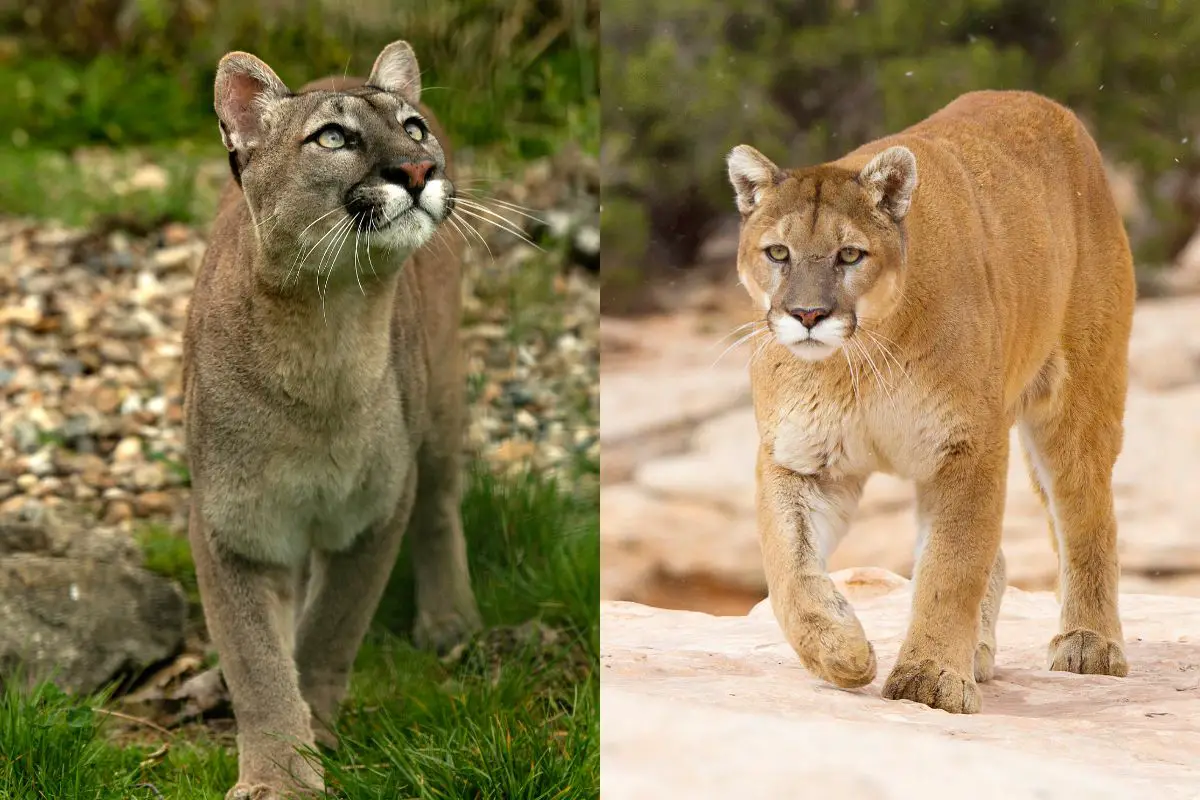
These animals actually have the world record for the most used English names, so that’s where a lot of the confusion comes from.
However, some could argue that there are some small differences between these animals. Why?
Because they are found in different areas, and therefore have adapted differently!
We can expect most animals we call “pumas” to be South American cougars, while “mountain lions” are predominantly North American cougars, but this isn’t verified scientifically.
If you want to learn about the differences between a puma and a mountain lion, keep reading! We’ll cover everything you need to know.
Puma Vs Mountain Lion: The Main Differences
Classification
- Also known as: mountain lion, puma, cougar, panther, catamount, red tiger, deer tiger, painter
- Average lifespan in the wild: 10-13 years
- Scientific name: puma concolor
- Genus: Puma
- Family: Felidae
- Order: Carnivora
- Class: Mammalia
- Kingdom: Animalia
- Phylum: Chordata
- Height: 2-3 feet
- Weight: 64-220 lbs
- Length: 3.25-5.25 feet (head and body); 23.5-33.5 inches (tail)
- Conservation status: varies depending on subspecies, typically least concern (population decreasing)
- Number of subspecies: seven living subspecies, one extinct
Understanding The Names Of The Mountain Lion
All the names of the mountain lion have led to a lot of confusion over the years.
Many people are unsure of whether a puma and mountain are the same thing, or a cougar and a puma.
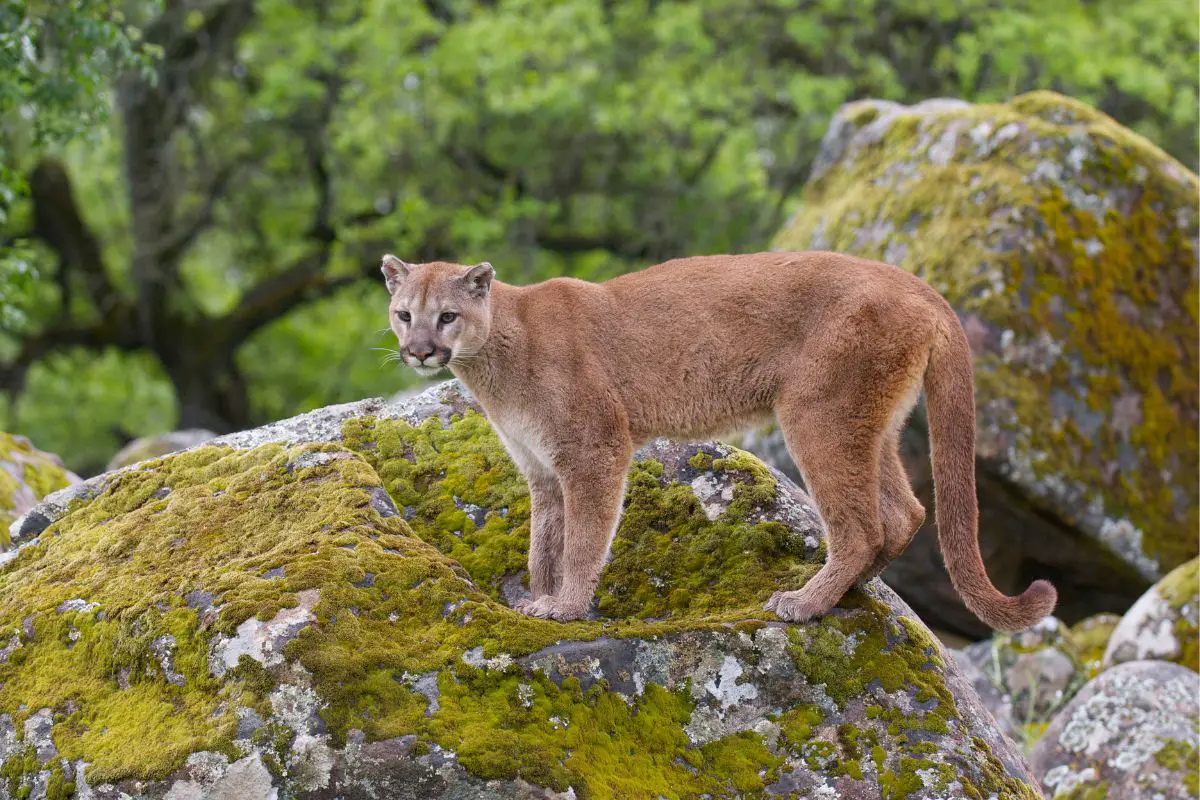
The answer is yes! Depending on where you’re from, you might have heard different names for this same animal, like catamount or painted screamer.
No matter which name you hear, they are referring to the mountain lion found across North and South America.
As such, pumas and mountain lions are actually the same animal.
These names exist because this species has a notoriously wide range.
As we know, names change depending on location. In other words, the name for a mountain lion will change depending on where the animal is found!
For example, the term “mountain lion” is more commonly used in most parts of the United States, but “catamount” is typically used in states like New Hampshire and Vermont.
Many people in the south might refer to these animals as “panthers” as the Florida panther (a mountain lion subspecies) is found there.
The term “puma” is commonly used by people who are not native to the United States, despite the name coming from the Inca! Overall, in the US, “mountain lion” or “cougar” are primarily used.
In South America, especially Argentina, (as well as the rest of the world) “puma” is the more popular name. This might be because this term is more scientific, since this animal’s scientific name is Puma concolor.
As such, we can assume that the pumas we’re talking about today primarily live in South America.
It’s important to remember that no matter which name you hear, with the exception of “panther”, they are referring to mountain lions.
The term “panther” is an exception as this name is rarely actually used to describe a mountain lion. Instead, it is used to describe melanistic (black) jaguars and leopards.
However, in this post, we will be focusing on “puma” and “mountain lion”, since those are the names we’re exploring today!
What Are The Differences Between A Puma And A Mountain Lion?
Size
One of the differences between a puma and a mountain lion is their size difference. However, this can also vary depending on where the animals are!
It’s common for animals around the equator to be smaller. As such, the pumas that are in Central America are likely to be smaller than the ones found in Argentina and Chile.
With that being said, it is generally thought that mountain lions are usually larger than the pumas found closer to the equator.
This might be because mountain lions usually need to be large enough to climb mountains easily and hunt the bigger animals that live there.
Pumas, depending on where they are, might be smaller because of their environment – staying hidden in grasslands is more crucial for many of them.
They will still climb, but it won’t be to the extent that animals in the north do.
Their prey is also typically smaller, so there’s no need for them to be as large in order to catch it. However, pumas that live in Argentina may be larger than those in Mexico.
Any potential differences in size are likely to be due to the environment and the diet they have. Both animals are still the same species.
Fur Color
The coloring of these animals can also be impacted by where they are found. Mountain lions, which are in the north, typically have gray-toned fur to help them blend in more.
They are still the tan color, but it will have cooler undertones. They also have more gray-toned underbellies due to their environment.
This is because the combination of snow and rocks has led to them needing to blend into this specific environment.
Pumas are usually the opposite to this. The animals that live in Central and South America tend to have a warm-toned or reddish hint to their fur to help them blend in.
This also applies to their white or gray underbellies, as red hints are often visible there, too.
This is because of the colors found in their environment, with a lot of them living in deserts or rich forests like those in Peru and Brazil.
There, there are richer colors to have to blend into in order to hunt prey successfully.
These differences in color aren’t obvious in many cases. However, if you look at side by side pictures, you may spot a few key differences in coloring!
Hunting Range
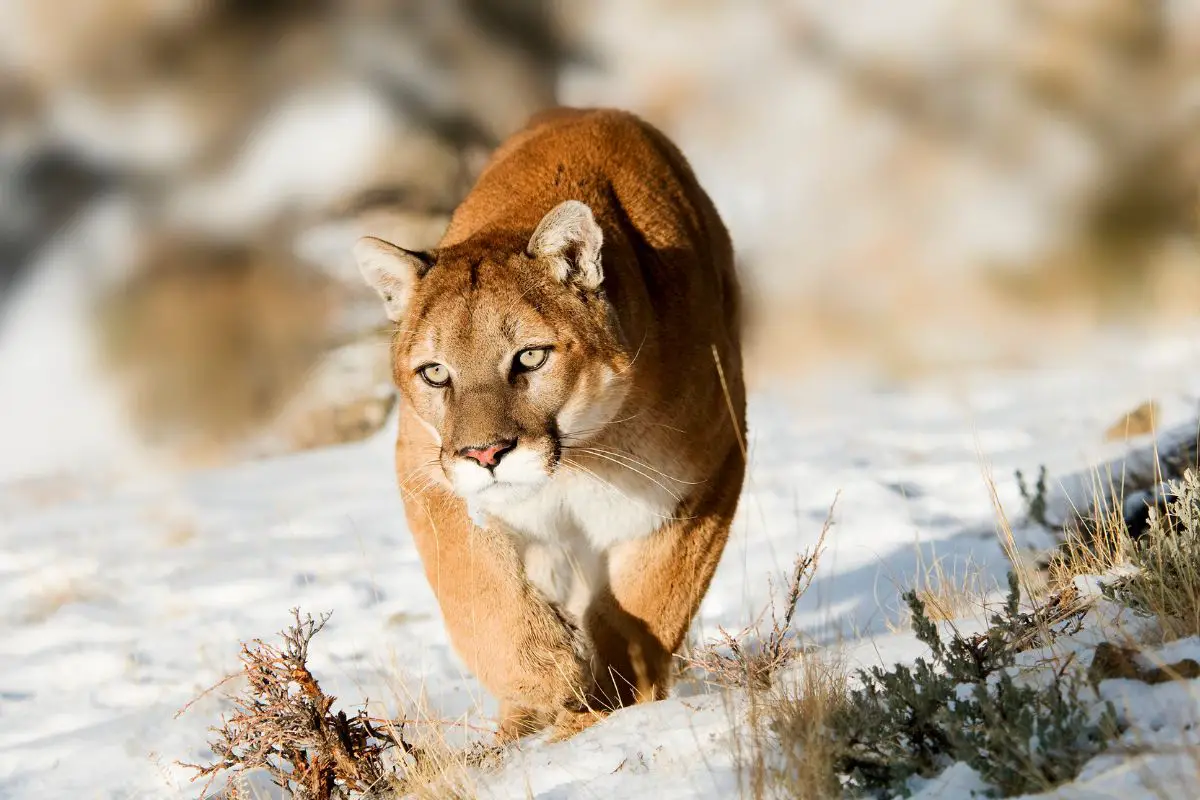
Another difference between the puma and mountain lion are their hunting ranges.
Because this species is incredibly adaptive, they are found in a variety of habitats, so their hunting ranges vary a lot!
The term “mountain lion” is associated with more mountainous regions, and therefore that is their hunting range.
Their presence in mountain and highland areas means that they are well adapted to surviving in them.
Pumas are usually in South and Central America. The term isn’t widely used in North America. They are more adapted to hunting in thick forests and prairies rather than in high altitudes.
However, there are puma populations that thrive in dense mountainous regions in countries like Peru and Argentina.
Both of these countries have vast landscapes which include high mountains, jungles, and even deserts.
However, both animals are still Puma concolor. They may be different subspecies depending on where they are, too.
In this case, the puma is more likely to be the South American Cougar or Andean mountain lion (Puma concolor concolor). The mountain lion in this scenario is most likely to be Puma concolor couguar.
Diet
Because pumas and mountain lions have different hunting ranges, a lot of their prey will be different, too!
Of course, they will still share some prey, but there are key differences to note. For example, mountain lions will usually hunt deer and even elk sometimes.
Pumas won’t have access to elk in Central and South America, as elk are primarily found in the north. The puma will mostly prey on things like birds and sloths, as well as lots of different rodents.
However, their most popular prey is the vicuña, a type of camelid. It’s estimated that vicuñas make up around 80% of the puma’s diet in Argentina’s San Guillermo National Park.
They are also known to go after animals like porcupines and even occasionally alligators and the cubs of spectacled bears.
In both cases, these cats are obligate carnivores. This means that they are only able to get their nutrition from their prey or other meat sources rather than vegetation.
Both pumas and mountain lions are adept hunters, and will typically hunt anything they feel they can take on.
This occasionally includes humans, too, though this is rare.
Climate
Since “mountain lion” is the common name given to these animals in the Northern United States, they tend to be associated with colder temperatures.
The climates they typically live in are colder, and some even live in parts of Canada. Because of the climate they live in, the fur of a mountain lion is likely to be thicker and denser.
Not only that, but they also usually have more fat on than to help protect them from the low temperatures.
Pumas are found further south in Central and South America. As such, their fur is usually thinner and shorter to help them stay cool.
The climate in Central and South America is typically much hotter and more tropical, and thick fur would cause the animal to overheat.
They are also likely to have less fat on them, as they won’t need the extra layers to keep them warm in the climate they live in.
However, the pumas that live in the south of South America are slightly larger than those in Central America, and tend to have thicker coats.
This is because temperatures can drop in those parts a lot more, and the cat needs to keep warm.
What Are The Similarities Between A Puma And A Mountain Lion?
Pumas and mountain lions are still the same species. Because of this, there are lots of things that they share, including their lifespan and social behavior.
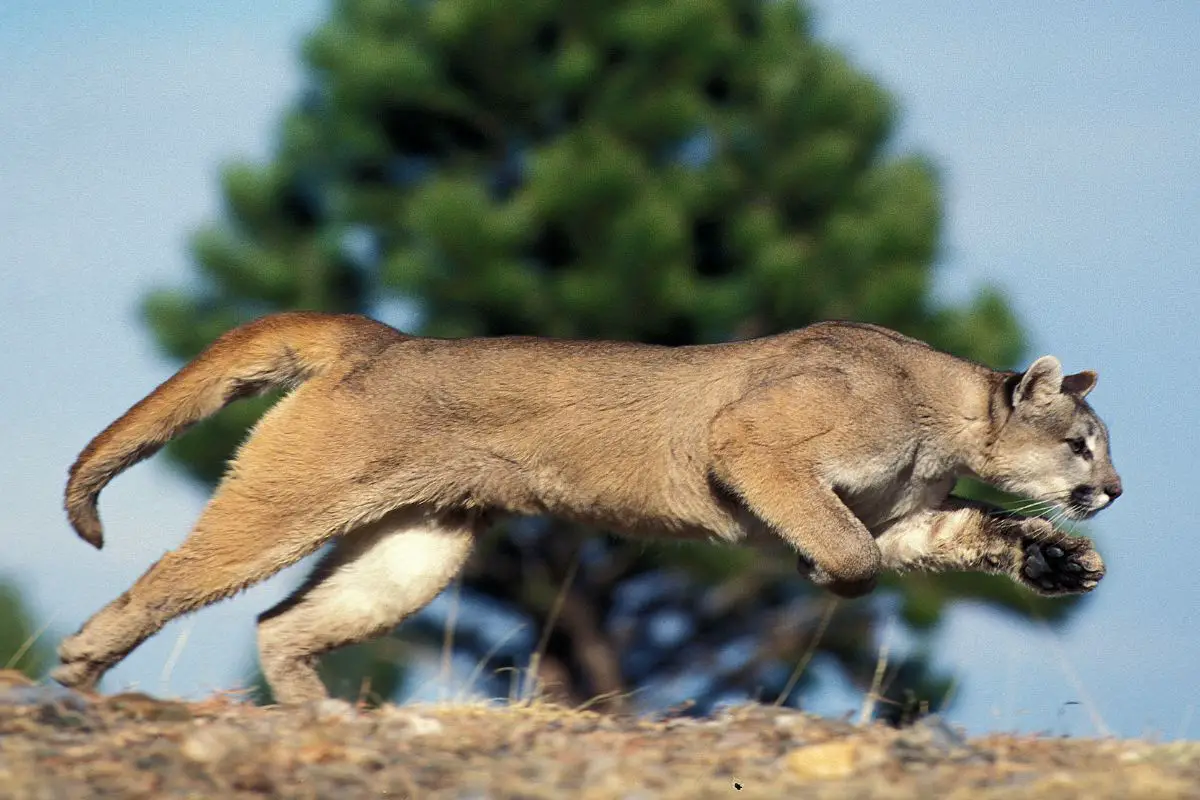
Subspecies typically make little difference when it comes to lifestyle, so we can expect these animals to live almost identical lives beyond the differences mentioned in the above sections.
Lifespan
Both pumas and mountain lions have an average lifespan of 10 years. They can die older or younger, but as research has been conducted, 10 years was the average that experts found!
However, it isn’t unusual for all animals to live much longer when in captivity, and these animals can live for up to 20 years when cared for!
This is because they don’t have to hunt for food and fight off other animals.
As soon as wild animals begin to show their age, they usually begin to struggle. Hunting becomes difficult, and other cats no longer see them as a threat. As such, they rarely make it past 10-13 years old.
Temperament
Both pumas and mountain lions prefer to steer clear of humans and human activities. They will avoid cities and places with a lot of human activities.
However, they have been known to occasionally attack people, especially hikers that wander into the animal’s territory.
Pumas and mountain lions suffer from extreme habitat loss, no matter where they are located. This has resulted in them living in closer proximity to humans than they would like.
As such, attacks are happening. In some cases, attacks occur because people come too close to dens or cubs, or the animal feels threatened.
In other cases, they may attack simply because they see humans as a food source, since we have reduced the amount of natural prey for them to hunt.
Hunting Style
These animals are excellent hunters, and will prey on anything from deer and elk to mice and birds. As we covered before, what they hunt will depend on where they are found!
In both cases, they are great stalkers, and will lie in wait for prey to get close enough before pouncing and killing.
To kill their prey, a mountain lion or puma will deliver a lethal bite to the animal’s spinal cord.
Many pumas and mountain lions like to “cache” the prey they catch if they are able to. This involves covering it with twigs and leaves so that they can return to it later on.
Of course, depending on what other predators are around, this doesn’t always work. Mountain lions usually have to deal with coyotes, while pumas may have to deal with jaguars.
Conservation
One subspecies (the Eastern cougar) is already extinct due to hunting in the 1800s. However, the surviving subspecies are listed as “least concern”.
This rating is just a general rating for the species as a whole, but some subspecies are under threat due to habitat loss and lack of prey.
The Florida panther is one of the subspecies that is threatened, with only small populations remaining.
In all cases, despite the “least concern” conservation rating, it’s no secret that puma and mountain lion numbers have been falling over the years.
Thankfully, there are a number of conservation efforts that are trying to pull this species back and protect them.
Social Behavior
They are solitary animals, which means that they live alone and have their own territories.
The only time that these animals don’t live alone is during the mating season and when the female is caring for her cubs.
When solitary, these animals need between 50 and 125 square miles to roam, with males preferring more space.
They can breed at any time of year, and after a gestation period of 90-96 days, the female will give birth to a litter of 1-5 cubs.
These cubs will then stay with her until they are ready to live on their own.
This is usually until they are around 15 months, or little over a year old. However, some cubs will stay with their mother until they are over two years old before venturing off on their own.
At 2 to 3 years of age, a female mountain lion will begin breeding. Males will also only begin to breed when they are sexually mature at around 3 years old.
Both males and females will only start breeding when they have established a permanent home territory, likely for safety reasons.
Final Thoughts
Pumas and mountain lions are the same species of animal. Both have the scientific name of Puma concolor, but the puma is more likely to be Puma concolor concolor, or the South American Puma.
Mountain lions, on the other hand, are more likely to me Puma concolor couguar, or North American mountain lions. However, this is not defined, and differences between subspecies can vary.
Because they are the same species, there are many small differences that separate them. These include their size, fur color, hunting range, diet, and climate they live in.
However, as they are the same species, they share the same lifespan, temperament, hunting style, social behavior, and conservation issues.
Hopefully this helped you understand the puma and mountain lion! Ultimately, they are the same animal, just with different names!
- Sink Your Teeth Into This: Analyzing the Powerful Lion Bite Force - September 8, 2023
- Siberian Tigers: Everything You Need To Know - September 4, 2023
- Do Lions Eat Humans? Understanding Lion Aggression and Risks - September 4, 2023








